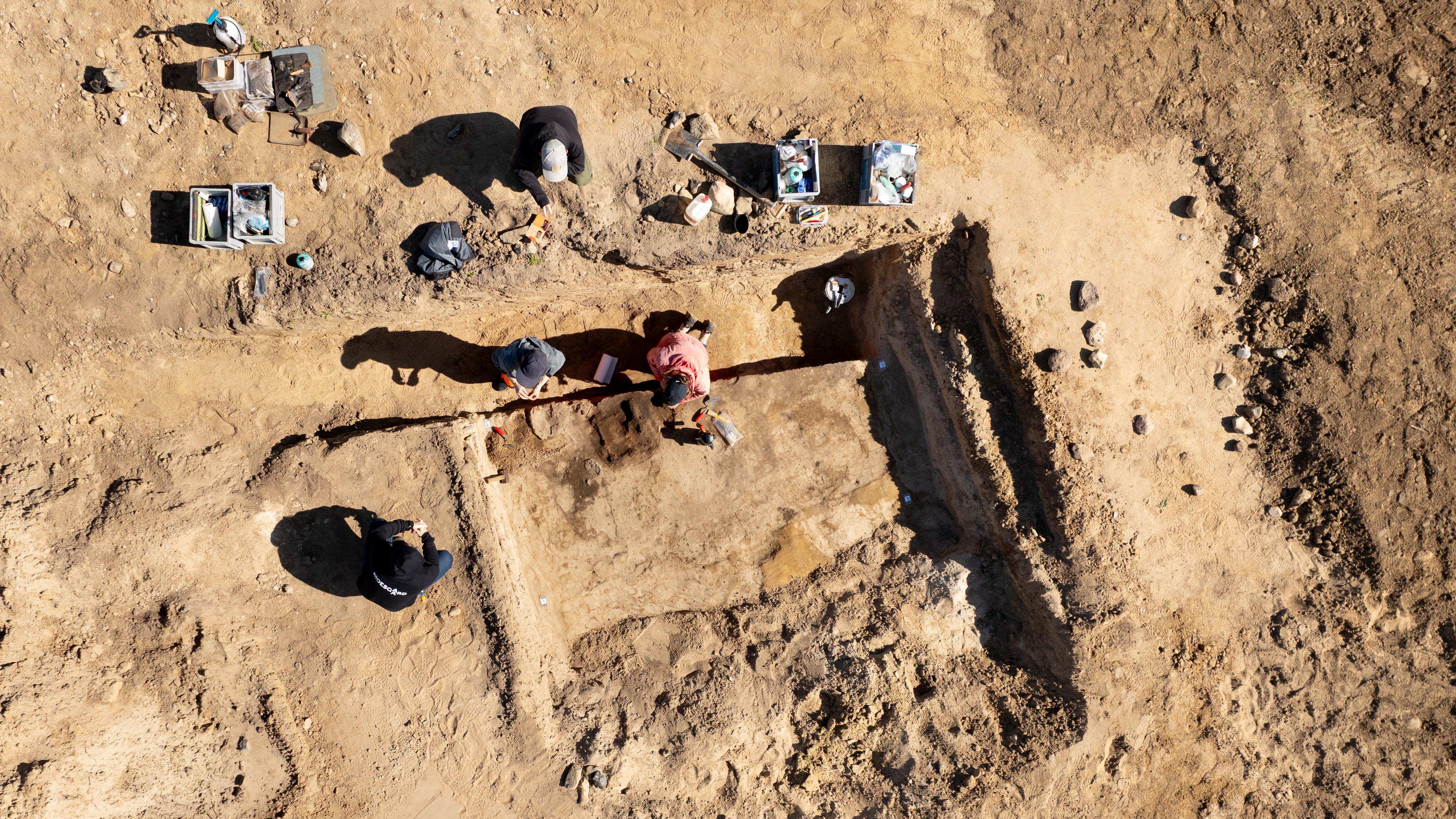
Archaeologists in Denmark have discovered 30 Viking Age graves likely of an elite family that may have served under Harald Bluetooth, the famed king of Denmark and Norway who ruled during the 10th century. The remarkable graves contained coins, pearls and ceramics, according to a translated statement from Moesgaard Museum, which ran the excavation.
Burials from the Viking Age (A.D. 793 to 1066) are not uncovered very often, Liv Stidsing Reher-Langberg, an archaeologist at the museum and excavation leader at the burial site, told Live Science in an email. Most graves from this time are found with few or no grave goods, she added. These newly unearthed burials in Lisbjerg, near Aarhus, however, came with an unusual number of lavish items, suggesting that the people buried in them were prosperous and of high status.
“The burial site here at Lisbjerg is quite special,” Reher-Langberg said.
Inside the “exceptional” graves
The archaeologists had previously found a chieftain’s farm nearby, so they associated these graves with him. This nobleman would have been part of the aristocracy at the time, just below King Bluetooth in the social hierarchy. Bluetooth was extremely influential, joining the tribes of the region into one kingdom — which is why the technology that unites electronic devices is named after him.
“The chieftain in Lisbjerg had enormous power — economically, politically, religiously and socially,” Reher-Langberg said.
The graves, which likely date to the late 900s, are of varied size and extravagance. This disparity could indicate a mix of social statuses among the buried, possibly the chieftain’s family and their enslaved people, the archaeologists said in the statement.
Related: 1,000-year-old Viking Age hoard has a pendant that may be a cross or Thor’s hammer
The “most exceptional” grave was a woman’s casket, Naja Kjærgård Laursen, a spokesperson at Moesgaard Museum, said in an email. The coffin “had the finest fittings, rivets, and an advanced locking mechanism,” Reher-Langberg added.
Using X-ray imaging, the team found that the casket contained ornate personal belongings, including jewelry, a needle and an elegant pair of scissors. They found more goods in other graves, as well as the teeth and bones of some of the buried individuals.
The excavation
Preliminary investigations in the area indicated there were traces of the pre-Roman Iron Age (500 to 1 B.C.). But even after finding the chieftain’s farm nearby, they didn’t have any reason to anticipate the Viking Age graves were there, too.
It was “a huge surprise,” Reher-Langberg said. “We simply had no expectations of finding graves.”
Now that the excavations are almost complete, the team has sent many of the objects to be analyzed and preserved by the museum’s Natural Science and Conservation department, Kjærgård Laursen told Live Science.
The human remains, wood and soil from the excavation will also be analyzed. “Hopefully, all this will lead to even more studies” in the area, Reher-Langberg said.
These artifacts will go on display at Moesgaard Museum in Denmark this summer.
Viking quiz: How much do you know about these seaborne raiders, traders and explorers?
Premium IPTV Experience with line4k
Experience the ultimate entertainment with our premium IPTV service. Watch your favorite channels, movies, and sports events in stunning 4K quality. Enjoy seamless streaming with zero buffering and access to over 10,000+ channels worldwide.
















